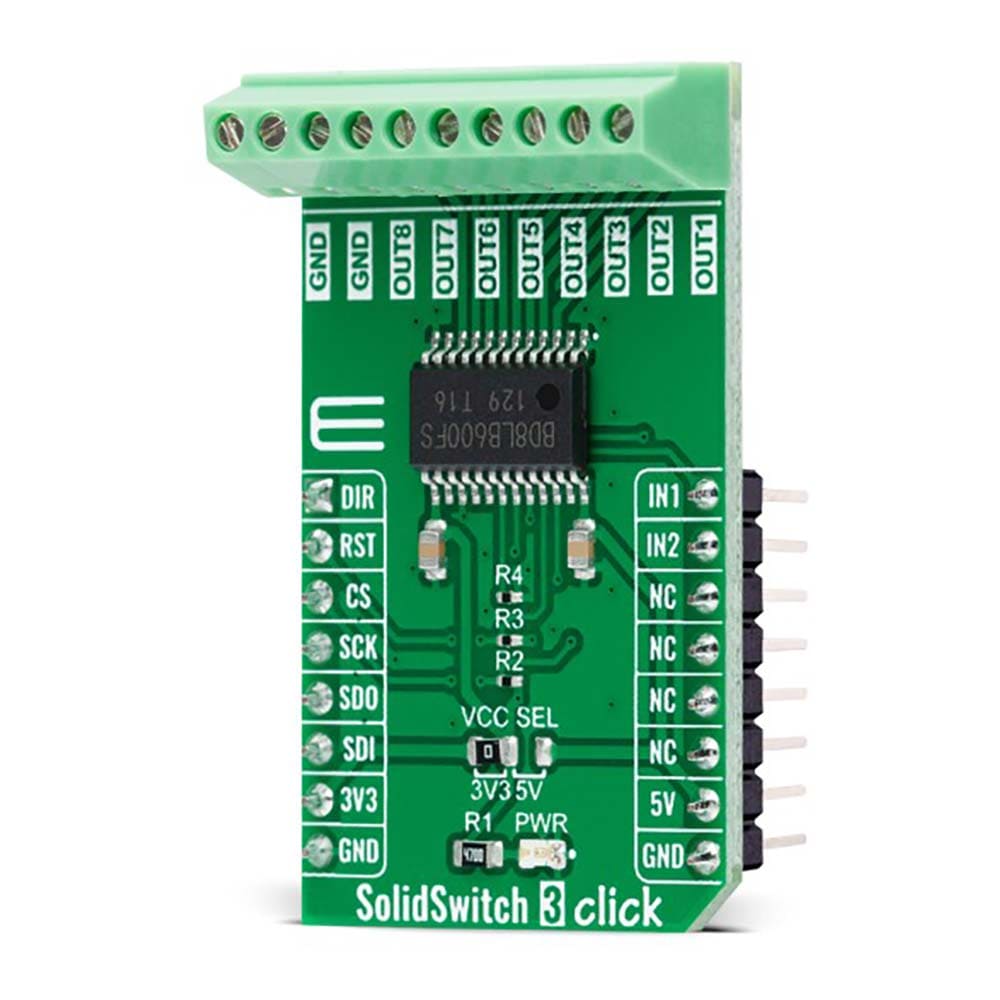
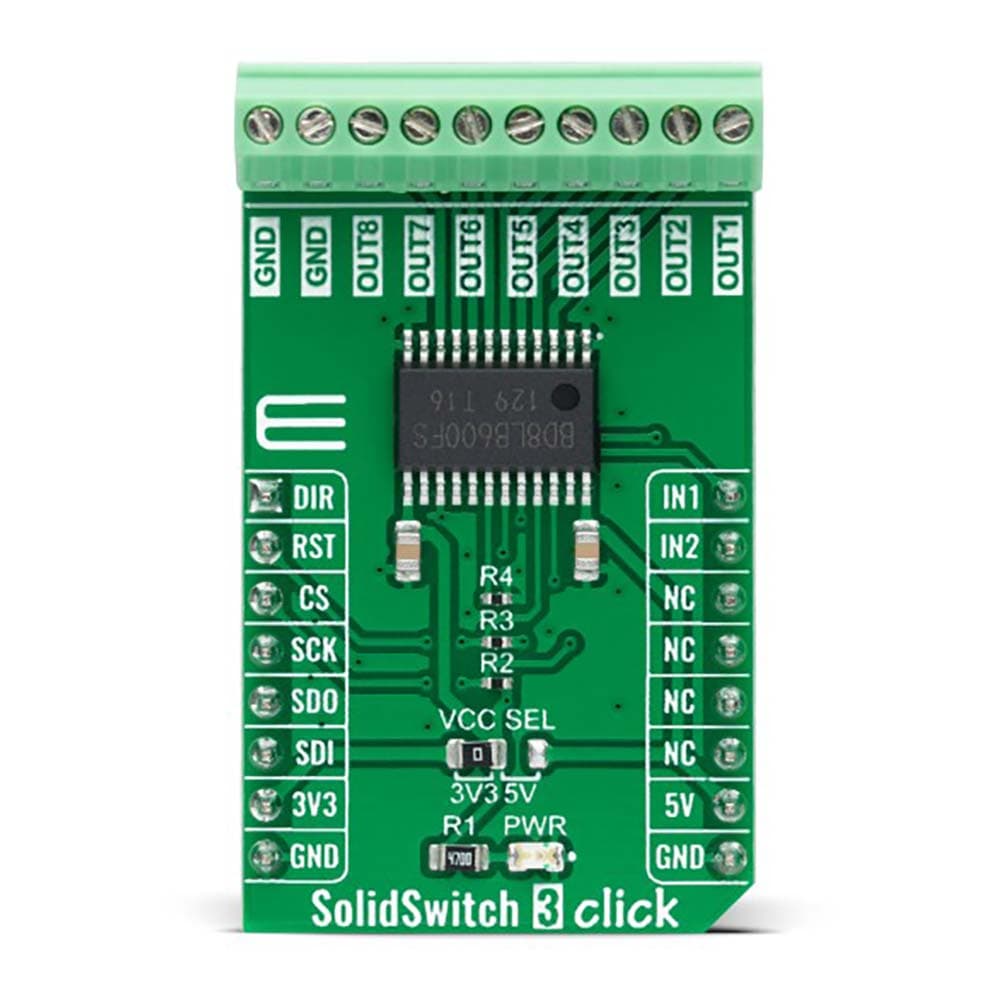
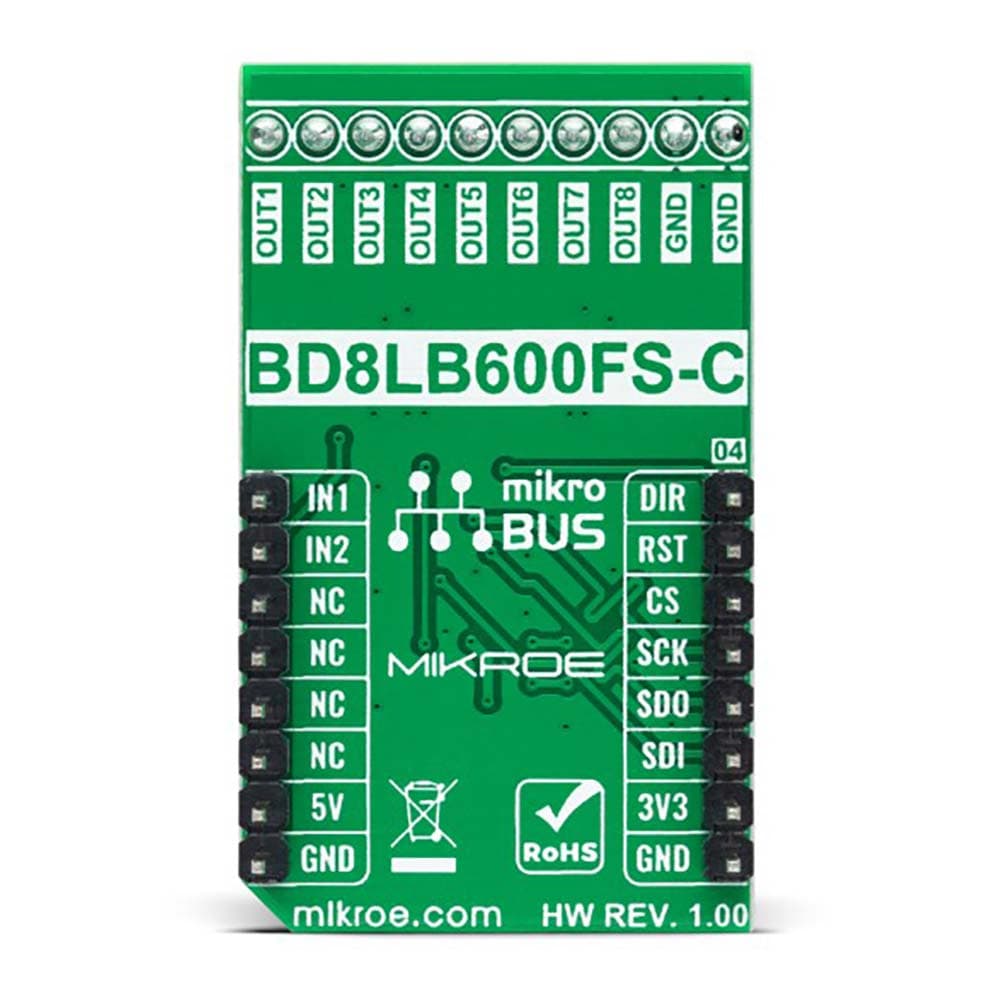
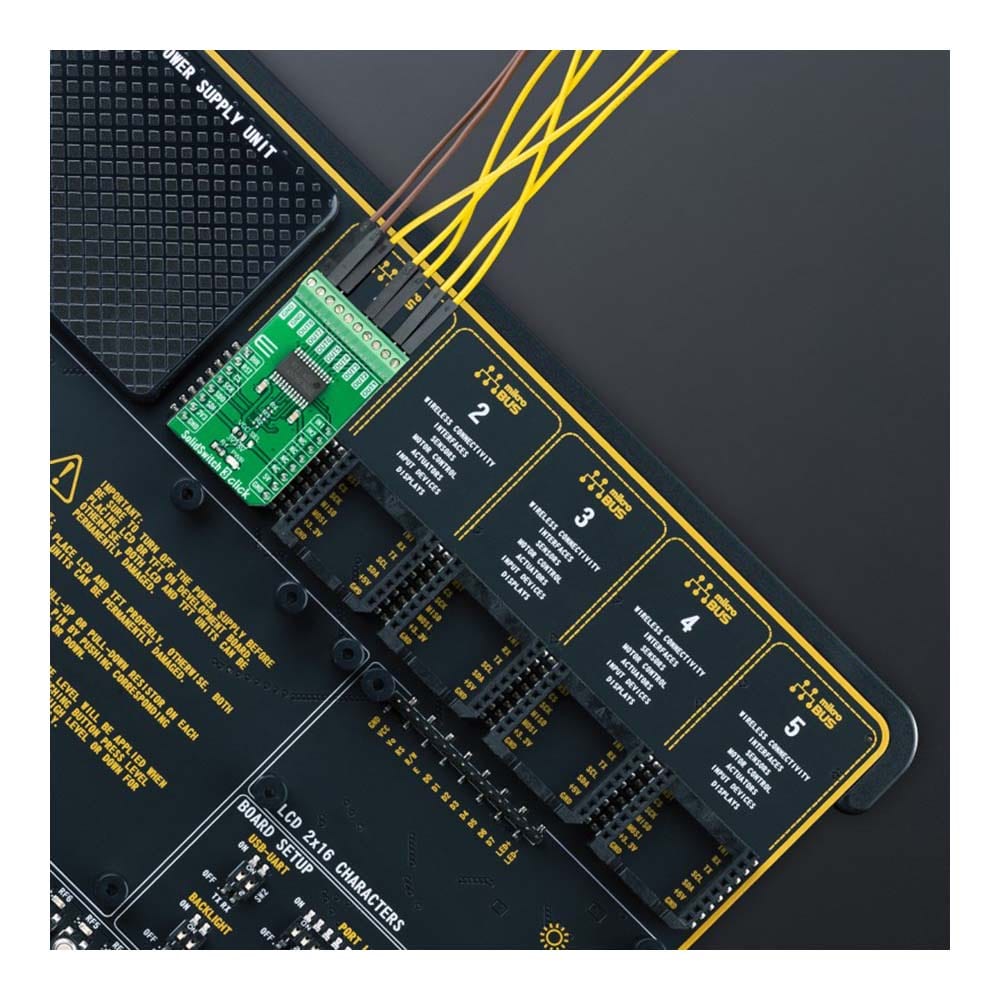
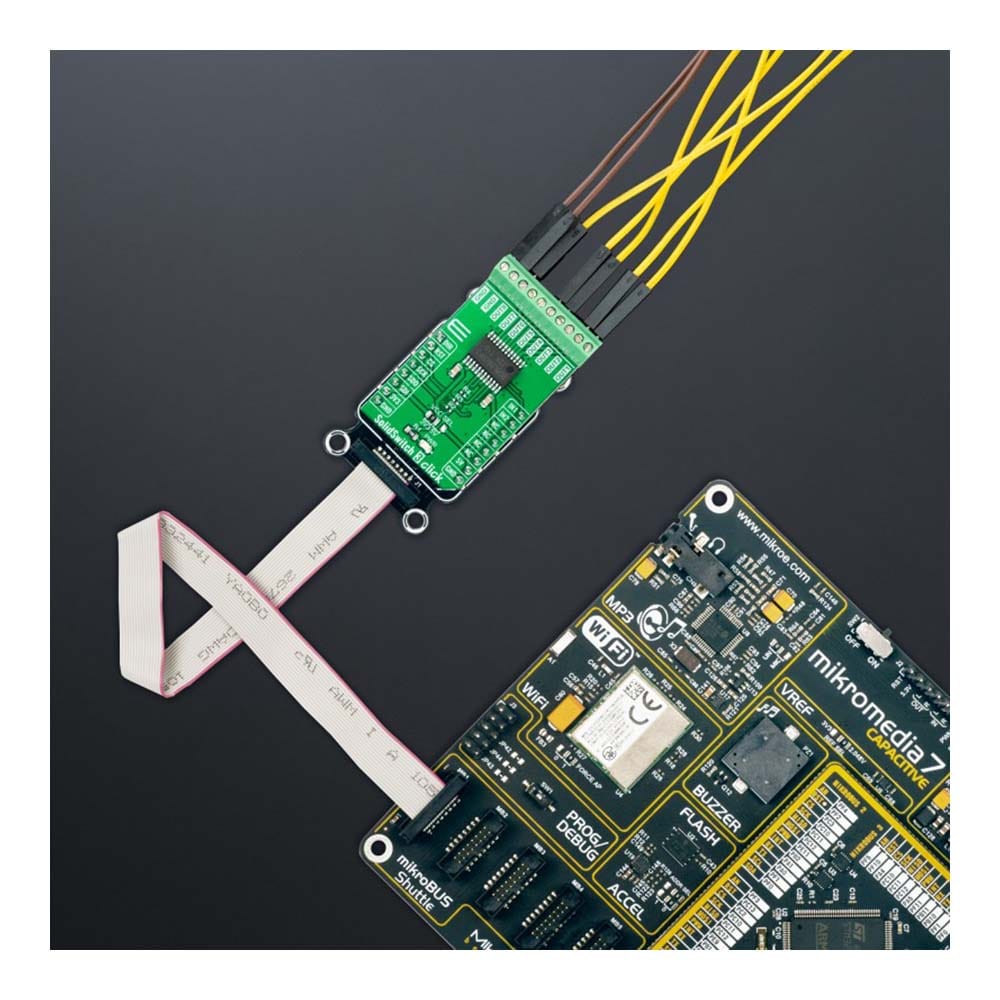
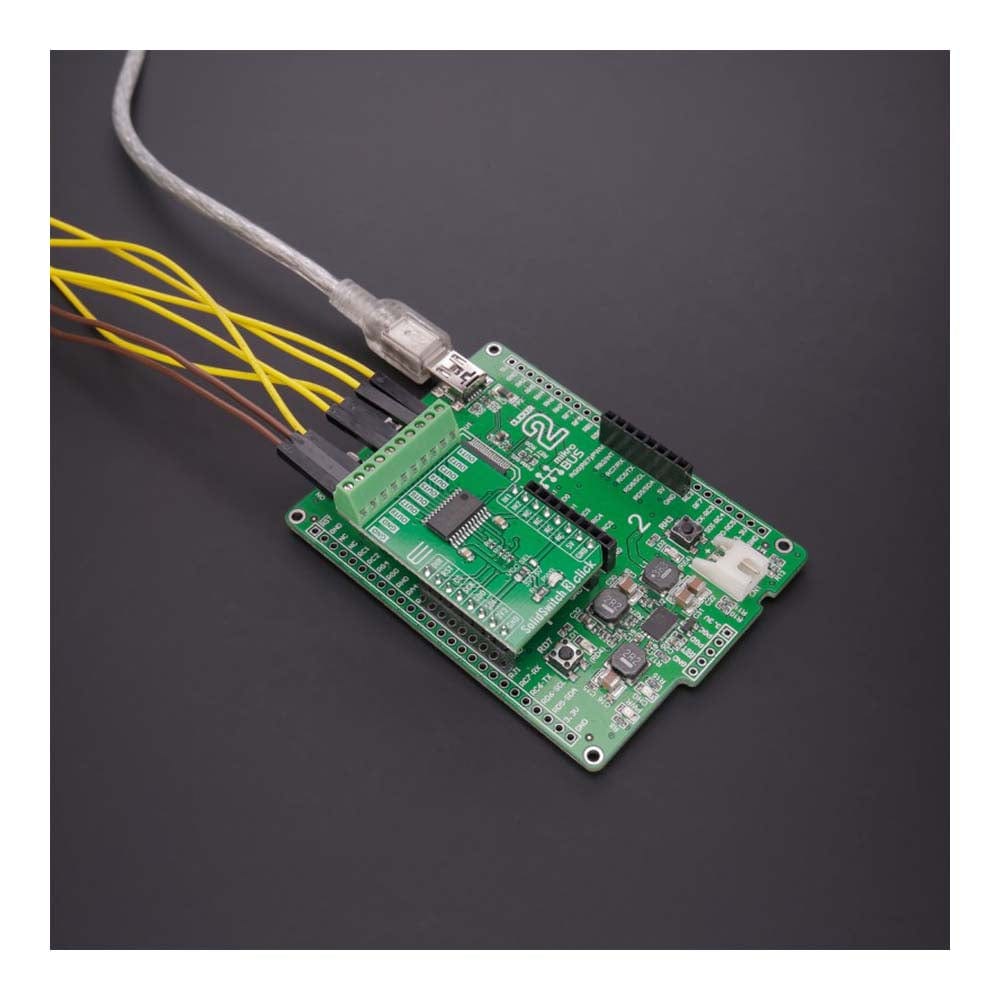
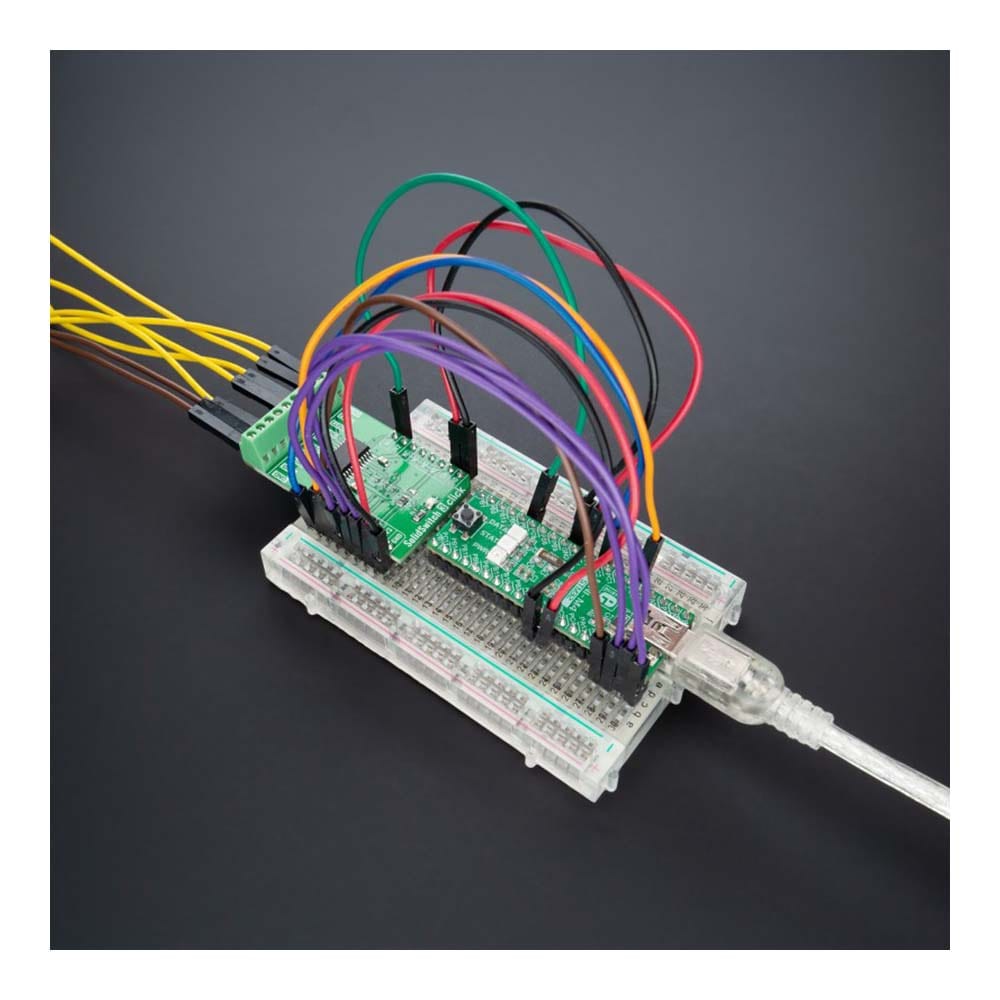
Overview
The SolidSwitch 3 Click Board™ is a compact add-on board that contains a load switching device. This board features the BD8LB600FS-C, an automotive eight-channel low-side switch from Rohm Semiconductor. Every switch is controlled via an SPI interface and includes an N-channel MOSFET that supports a maximum current of 1A. The BD8LB600FS-C also has built-in protection circuits, namely the overcurrent, the thermal shutdown, the open-load detection, and the voltage lock-out circuits. Moreover, this device also possesses a diagnostic output function during abnormal detection. This Click board™ is suitable for driving resistive, inductive, and capacitive loads.
The SolidSwitch 3 Click Board™ is supported by a mikroSDK compliant library, which includes functions that simplify software development. This Click board™ comes as a fully tested product, ready to be used on a system equipped with the mikroBUS™ socket.
Downloads
Das SolidSwitch 3 Click Board™ ist eine kompakte Zusatzplatine, die ein Lastschaltgerät enthält. Diese Platine verfügt über den BD8LB600FS-C, einen 8-Kanal-Low-Side-Schalter für die Automobilindustrie von Rohm Semiconductor. Jeder Schalter wird über eine SPI-Schnittstelle gesteuert und enthält einen N-Kanal-MOSFET, der einen maximalen Strom von 1 A unterstützt. Das BD8LB600FS-C verfügt außerdem über integrierte Schutzschaltungen, nämlich Überstrom, thermische Abschaltung, Leerlauferkennung und Spannungssperrschaltungen. Darüber hinaus verfügt dieses Gerät auch über eine Diagnoseausgabefunktion bei abnormaler Erkennung. Dieses Click Board™ ist zum Ansteuern ohmscher, induktiver und kapazitiver Lasten geeignet.
Das SolidSwitch 3 Click Board™ wird von einer mikroSDK-kompatiblen Bibliothek unterstützt, die Funktionen enthält, die die Softwareentwicklung vereinfachen. Dieses Click Board™ wird als vollständig getestetes Produkt geliefert und ist bereit für den Einsatz auf einem System, das mit der mikroBUS™-Buchse ausgestattet ist.
| General Information | |
|---|---|
Part Number (SKU) |
MIKROE-5079
|
Manufacturer |
|
| Physical and Mechanical | |
Weight |
0.02 kg
|
| Other | |
Country of Origin |
|
HS Code Customs Tariff code
|
|
EAN |
8606027389313
|
Warranty |
|
Frequently Asked Questions
Have a Question?
Be the first to ask a question about this.







